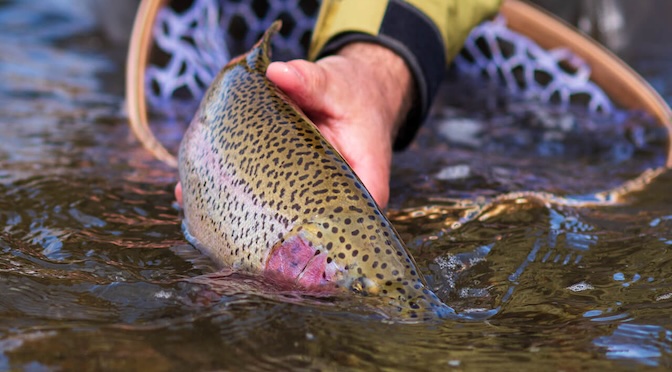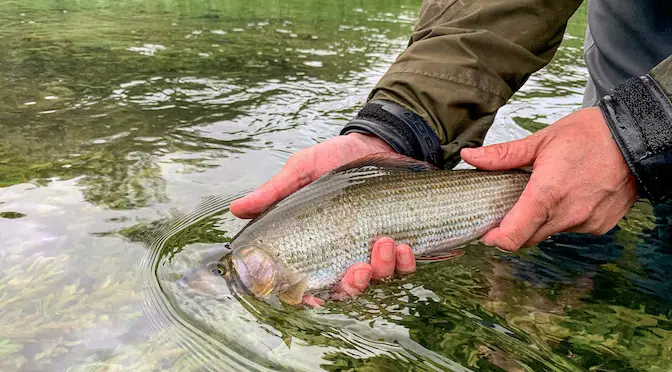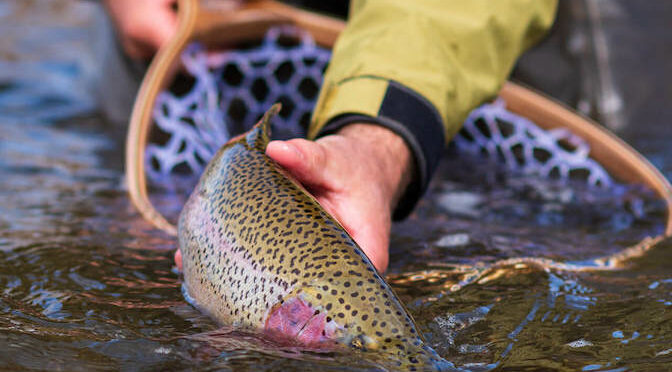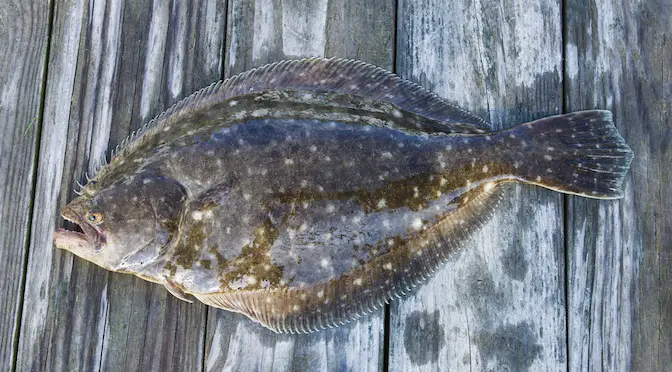Last updated on October 17th, 2023.
- Wading Wisdom #13 – Simon Gawesworth - July 7, 2025
- On the Water with the Korkers Bantam Lite - June 26, 2025
- How to Find Trout in Rivers & Streams Anywhere - June 13, 2025
When it comes to choosing the right fishing sunglasses, there are plenty of important factors you should consider.
It doesn’t matter whether you’re a sight fisher or an angler, or if you like to fish at dawn or dusk, you need to make sure you’re making a wise buying decision and invest in a product that lasts longer and has all the necessary features and functionalities to effectively augment your style of fishing.
You see, fishing sunglasses aren’t just for helping reduce glare or provide good UV protection. They’re also meant to help increase your visual acuity and offer excellent color contrast, helping you spot fish more easily. In light of this, we’re going to talk about some vital elements that you should keep in mind when you’re shopping for the best pair of fishing sunglasses.
What’s Important In The Fit of Fly Fishing Sunglasses?
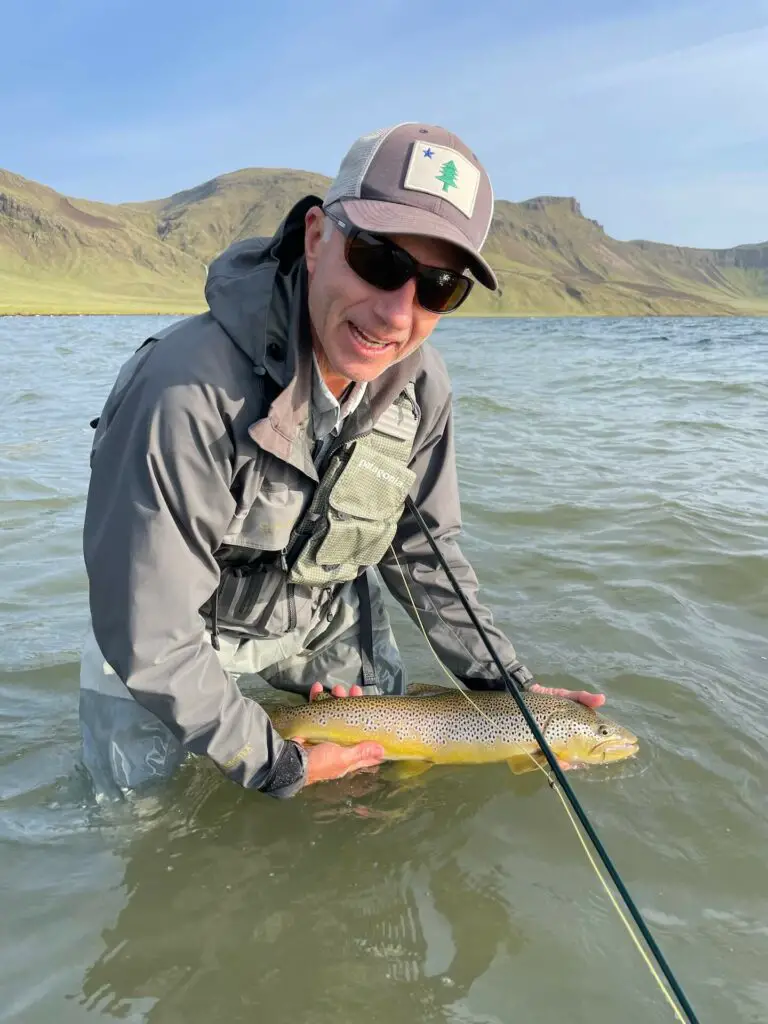
They Should Have a Snug Fit

While comfortability is, of course, very important, you still need to look for sunglasses that perfectly complement the shape and contours of your head and face. There are two advantages of wearing sunglasses that fit your face well. For instance, they’re going to help significantly reduce the amount of horizontal glare entering your eyes while also keeping UV radiation at bay.
Aside from offering a comfortable fit, the ideal fishing sunglasses will have a frame that closely contours the shape of your head. This wrap shape serves a dual purpose. Wearing an improper size will just allow the sunlight to enter your eyes from the sides and cause irritable distractions, a big no-no when you’re fishing!
Moreover, a close-fitting or well-wrapped frame design is also going to help protect your eyes from a variety of airborne elements such as insects, dust, etc. It’s also going to help minimize the total drag rate of the frames when you’re fishing in a windy situation, and you won’t have to constantly adjust the sunglasses.
Glare Elimination

One of the most annoying challenges of deep-sea fishing or fishing on a sunny day in general, is the glare. You’ll be forced to squint and won’t be able to see the fish with the glare distracting you. This is essentially where polarized lenses come in. Polarized sunglasses are specifically designed to minimize the glare of the sun reflecting off the water, allowing only vertical light to enter your eyes while scattering the horizontal light, allowing you to see beneath the surface of the water no matter how sunny it is.
Should Be Sweat Resistant or Anti-Slip
Fishing is a pretty grueling activity, especially if you’re deep-sea fishing in summer. It’s going to be hot, and you’ll be sweating a lot. Plus, you’ll be busy casting lines, reeling, and hooking the best catch of the day. During all this, you can’t afford to be distracted, constantly adjusting the fit of fly fishing sunglasses as they slip down your nose. The solution? Well, opt for sunglasses that are designed with hydrophobic and oleophobic properties. Oleophobic and hydrophobic coatings help make the sunglasses water-repellant along with giving them anti-slip properties.
Rubber Nose Pads and Temple Insides For Better Grip

Fly fishing sunglasses with rubber nose pads and temple insides are specifically designed to enhance the gripping and stability of the sunglasses. You won’t have to worry about the sunglasses constantly slipping off your face while you’re casting or reeling or whether you’re sweating profusely. The temple insides or leash attachments help keep the sunglasses firmly wrapped around your neck, which means you won’t have to take them off when you don’t need them.
Wider Shapes for Greater Field of Vision

The wider the frame and lenses, the greater your field of view. Investing in particularly larger shapes can provide you with an added advantage when you’re deep-sea fishing, helping you be more aware of your surroundings. They won’t just add to your visual acuity when searching for fish but they’re going to help you keep an eye out for other boaters and dangers while you’re at sea. Plus, with better peripheral vision, you won’t have to constantly move your head around to look for fish.
Moreover, wider shapes also help minimize your blind spots when you’re fishing and you won’t have to worry about potential obstructions in your field of view, which is essential to successfully land a strike and reel in your catch.
Extra Wide Shapes to Wear Above Glasses
Extra wide shapes or fit-over sunglasses can be pretty convenient for anglers who wear prescription glasses. One of the best things about these types of sunglasses is that you can wear them directly over your regular glasses without having to switch the glasses while you’re busy fishing.
Pop On Lenses for Regular Glasses
In terms of functionality, there’s no real difference between pop-on and extra-wide sunglasses. The only difference is that you can have pop-up lenses customized in line with your prescription glasses. They’re fitted directly above your regular frames. You can slide the lenses down when you want to use them and pop them off when you don’t. Pretty convenient. Not to mention, pop-up lenses are comparatively more cost-effective than buying a separate pair of polarized fishing sunglasses.
Fishing Sunglasses Offer a High Degree of Versatility
Sure, you can say that polarized sunglasses for fishing can be a bit expensive. However, their versatility and functionality make up for the cost. You see, fishing sunglasses can also be used for a variety of other types of activities and sports. Let’s take a brief look at what other things you can use them for:
Cycling
Because polarized fly fishing sunglasses come with a wrap-around design, they can help protect you from a variety of things such as flying debris, high winds, and UV rays. Plus, some sunglasses also come with anti-slip features. All of these functionalities make fishing sunglasses perfect for cycling as well. They’ll help reduce the glare while giving you a greater field of view and you won’t have to constantly adjust them as you pedal on.
Camping or Hiking
Fishing sunglasses are designed for UV protection and help minimize horizontal glare. Both these features are perfect for people who like to go hiking or camping on bright sunny days. Not to mention, wider shapes can help protect your eyes from insects and dust while you’re hiking up or down your favorite trails.
Skiing

While you can buy special sunglasses designed just for skiing, it’s not a particularly bad idea to use fly fishing sunglasses. It can be argued that fishing sunglasses may not be ideal for snowy conditions, however, if they have polarized lenses, the sunglasses will help reduce glare and the light reflected off the snow, giving you better optical acuity.
Bottom Line
So there you have it, an in-depth analysis of all the factors you should carefully consider when planning to invest in the best fly fishing sunglasses. As a rule of thumb, look for a snug fit that protects you from the glare. On the other hand make sure that your shades are not too tight around your ears as that might cause headaches on the long run.
FAQs: Shape and Fit of Fishing Sunglasses
Which lenses should I choose for fly fishing?
The right type of fishing lenses will primarily depend on your style of fishing. If you’re a deep-sea angler, you should opt for grey or blue polarized lenses. If you prefer fishing in low conditions, go for yellow or red lenses.
Can I use regular sunglasses for fishing?
You can. However, regular sunglasses aren’t designed to provide optimal color contrast, and neither can they reduce horizontal glare. For effective results, you’ll need polarized sunglasses.
Why is the shape of fishing sunglasses important?
The shape of fishing sunglasses plays a critical role in how effectively they shield your eyes from harmful UV rays, reduce glare, and prevent any visual hindrances. A wraparound shape, for instance, ensures minimal light enters from the side, offering a wider field of clear vision and better protection from potential irritants.
What type of fit should I look for in fishing sunglasses?
Ideally, fishing sunglasses should have a snug fit to prevent them from slipping off during active movement. They shouldn’t be too tight to cause discomfort or marks on your face. Adjustable nose pads and rubberized temple tips can enhance the fit, making the sunglasses more comfortable during extended use.
How do I determine the right fit for my face shape?
Your face shape can guide you in choosing frames that are both flattering and functional. For instance, individuals with round faces might benefit from squared or angular frames, while those with square faces might opt for round or oval frames. Trying on multiple frames and consulting with specialists can also help in making the right choice.
Do larger frames offer better protection during fishing?
Larger frames generally provide more coverage, which can be beneficial in protecting your eyes from sunlight, reflection, and potential debris. However, the fit is paramount. Oversized frames that don’t sit properly on your face might allow stray light to enter, diminishing their effectiveness.
Can I get fishing sunglasses customized to my fit preferences?
Absolutely! Many brands offer customizable features, like adjustable nose pads, flexible frames, or varying sizes, allowing anglers to achieve a fit that’s both comfortable and functional for their specific needs.


